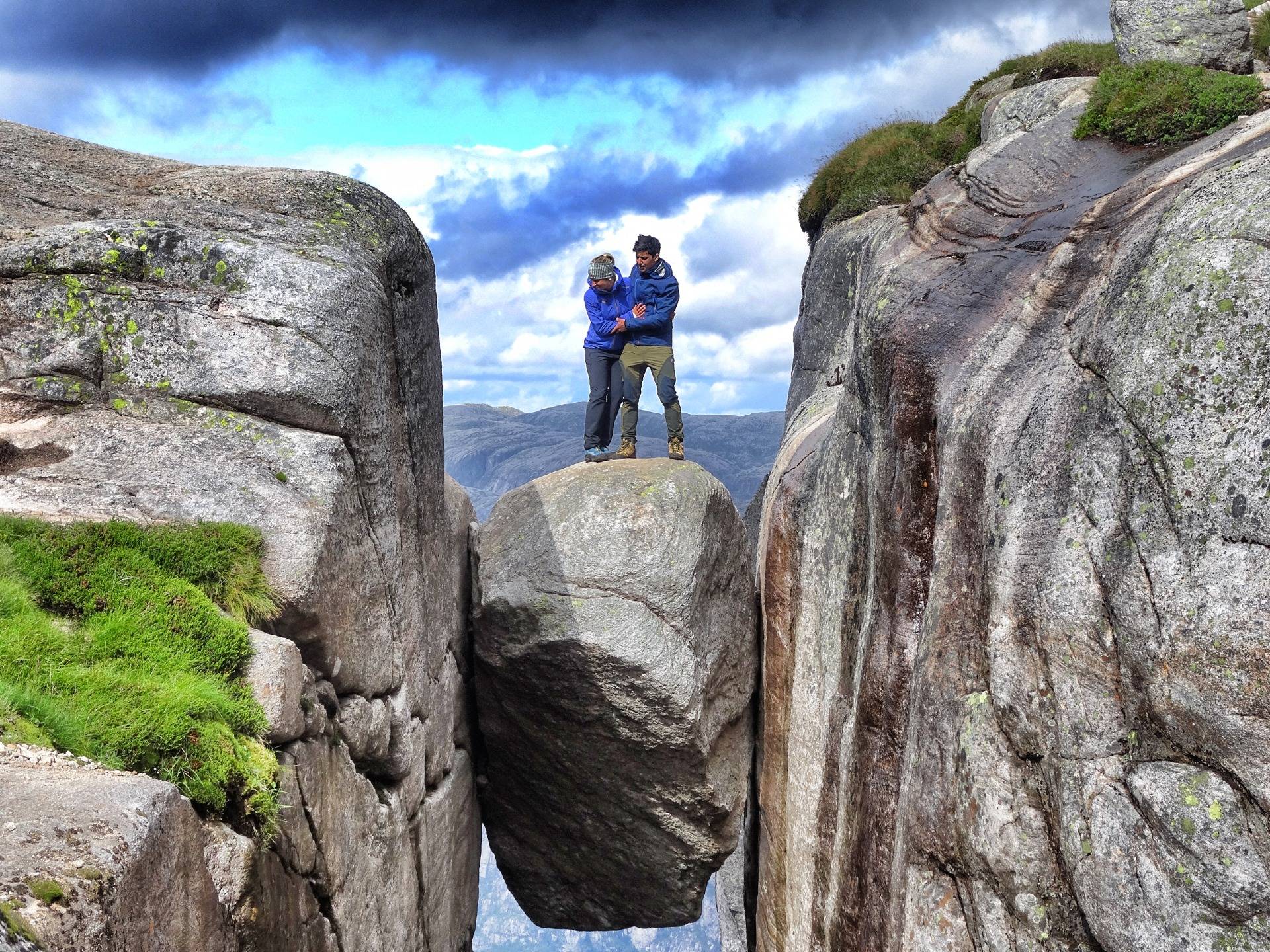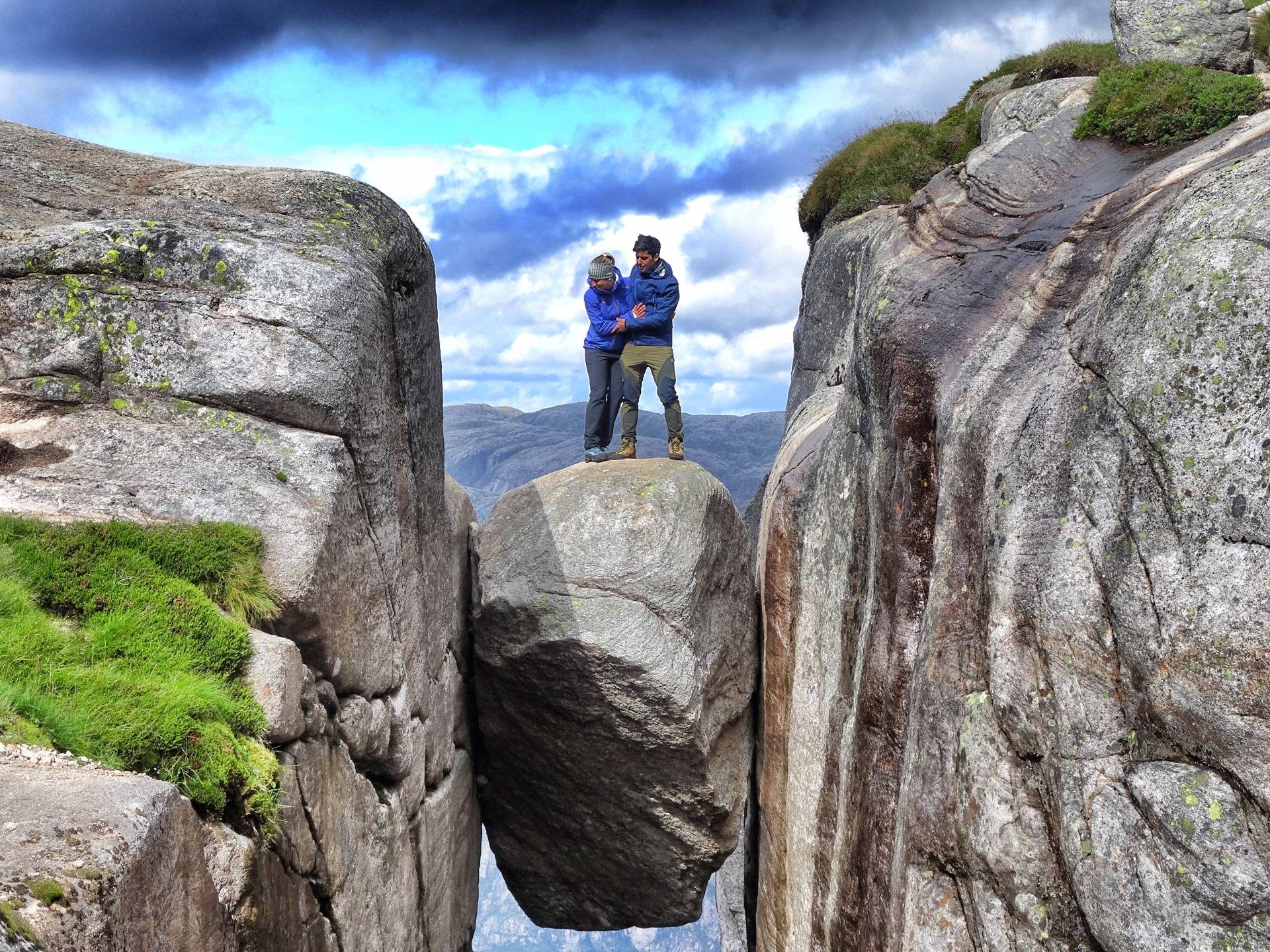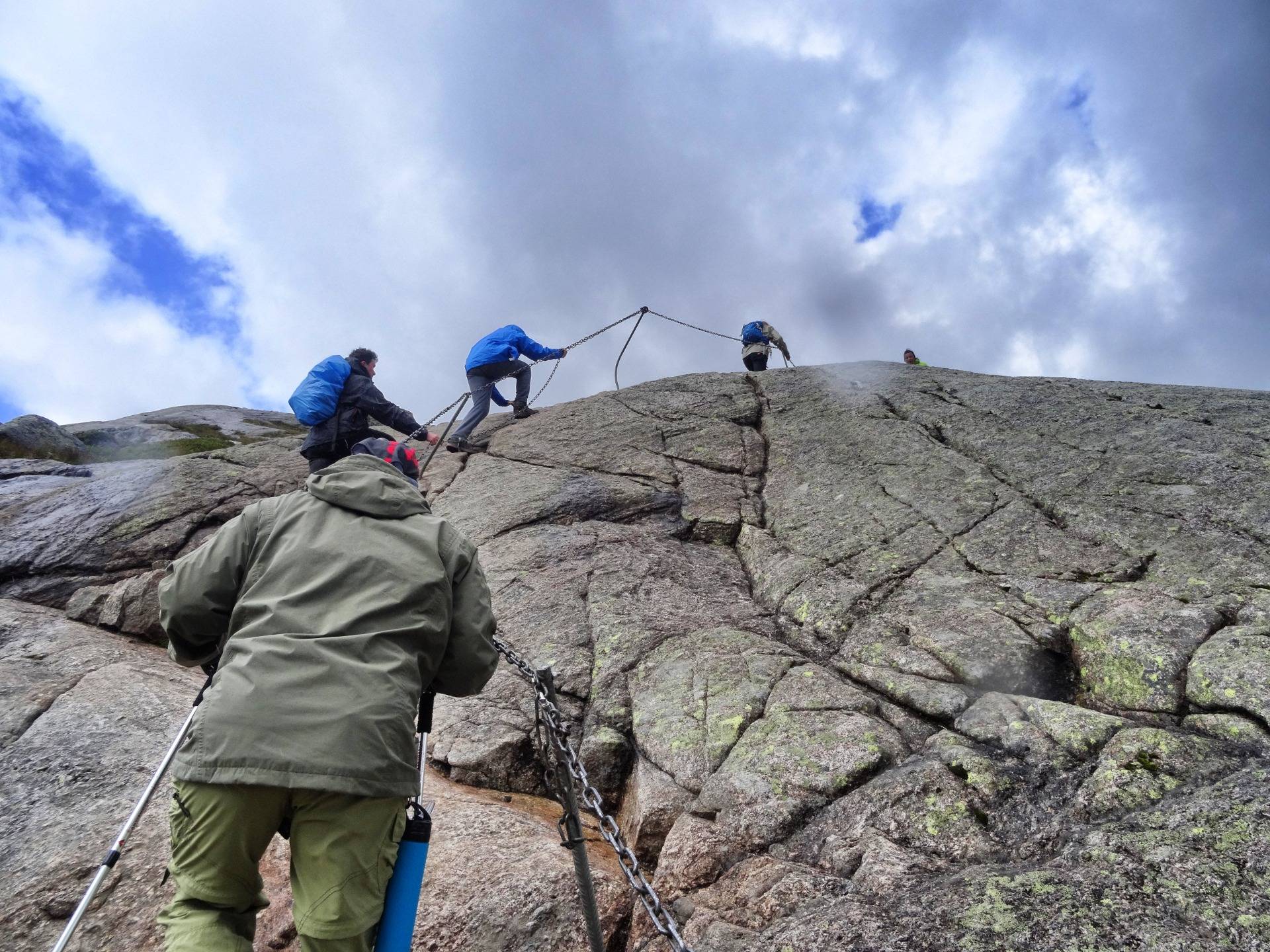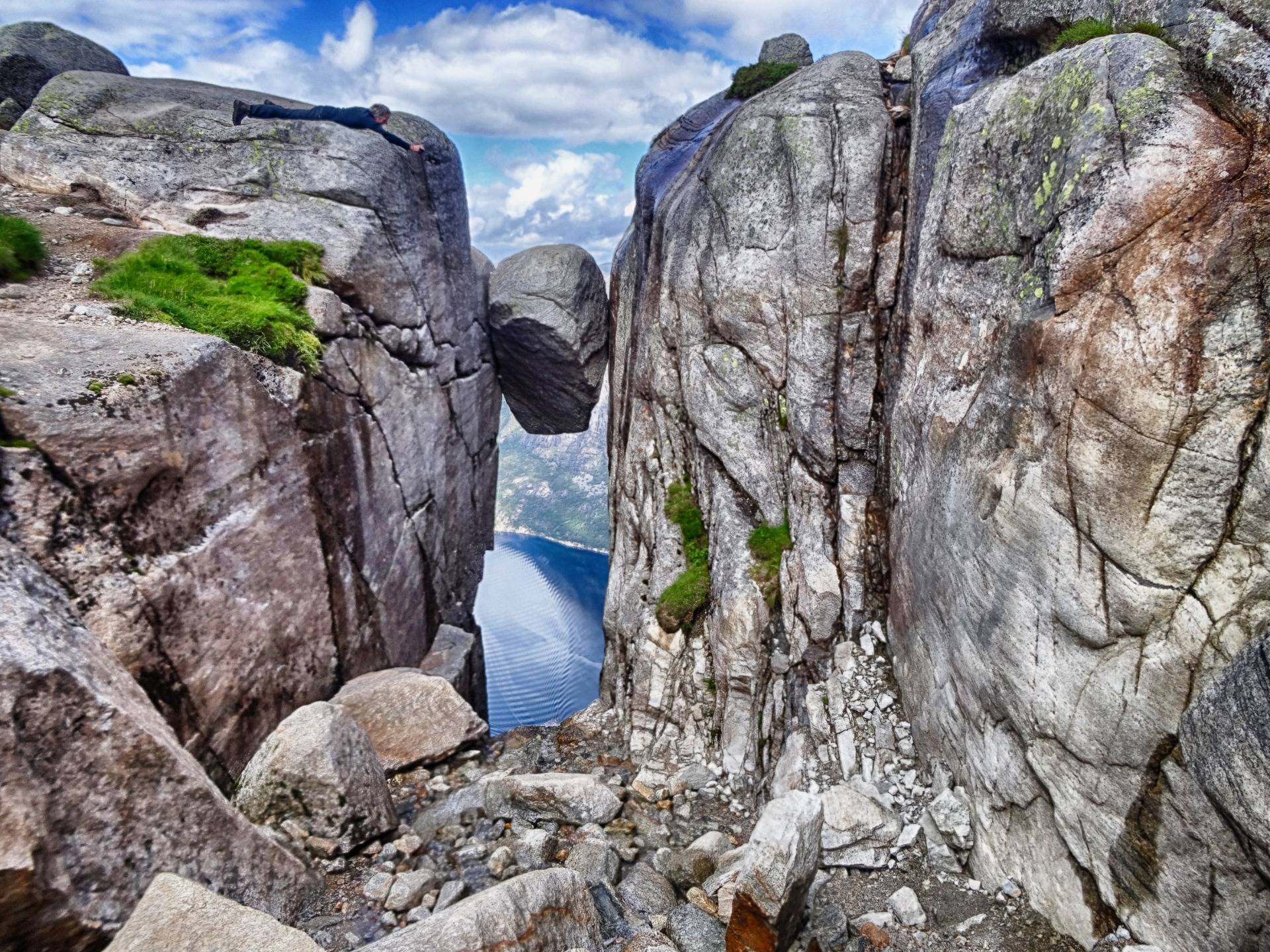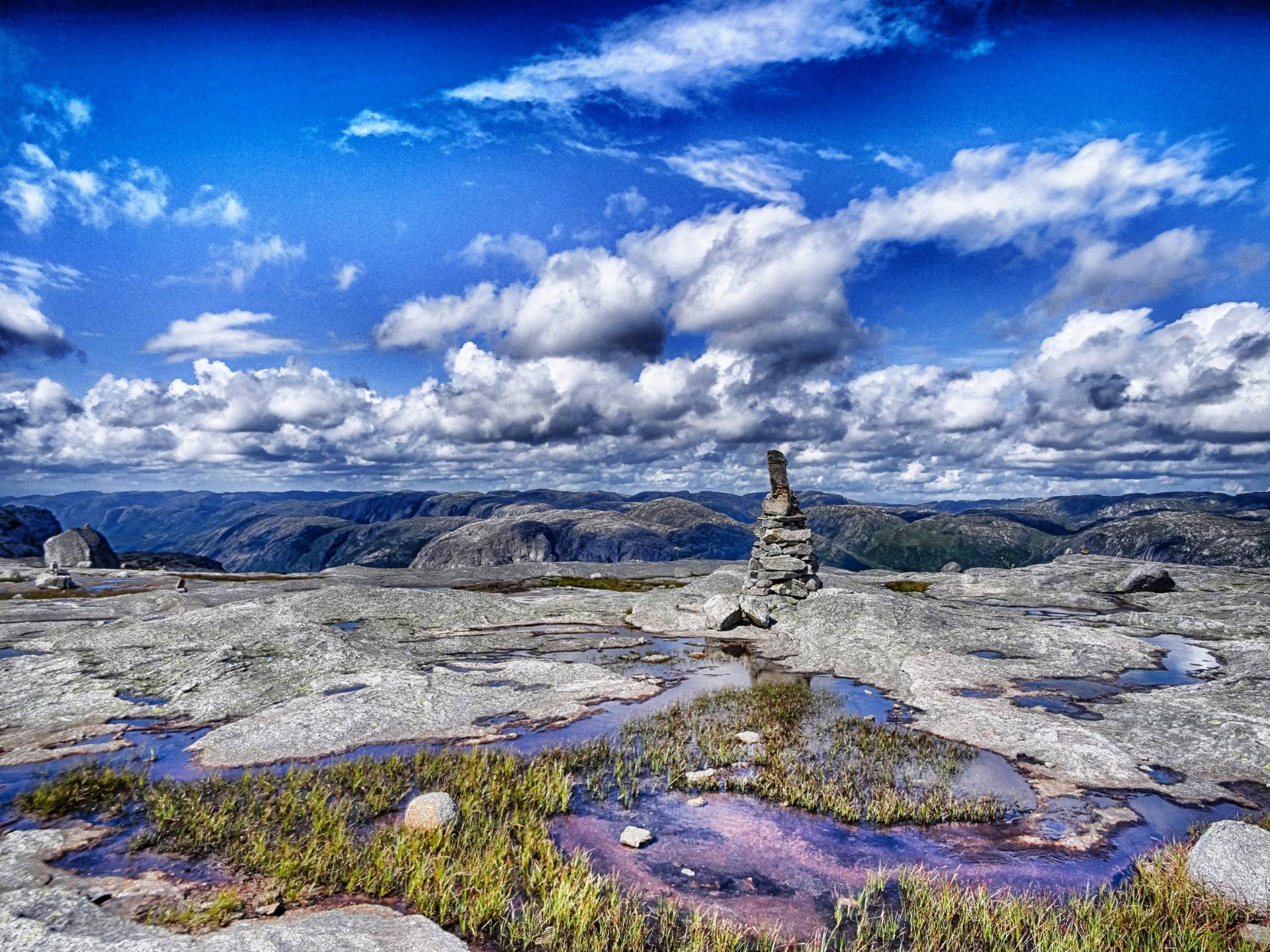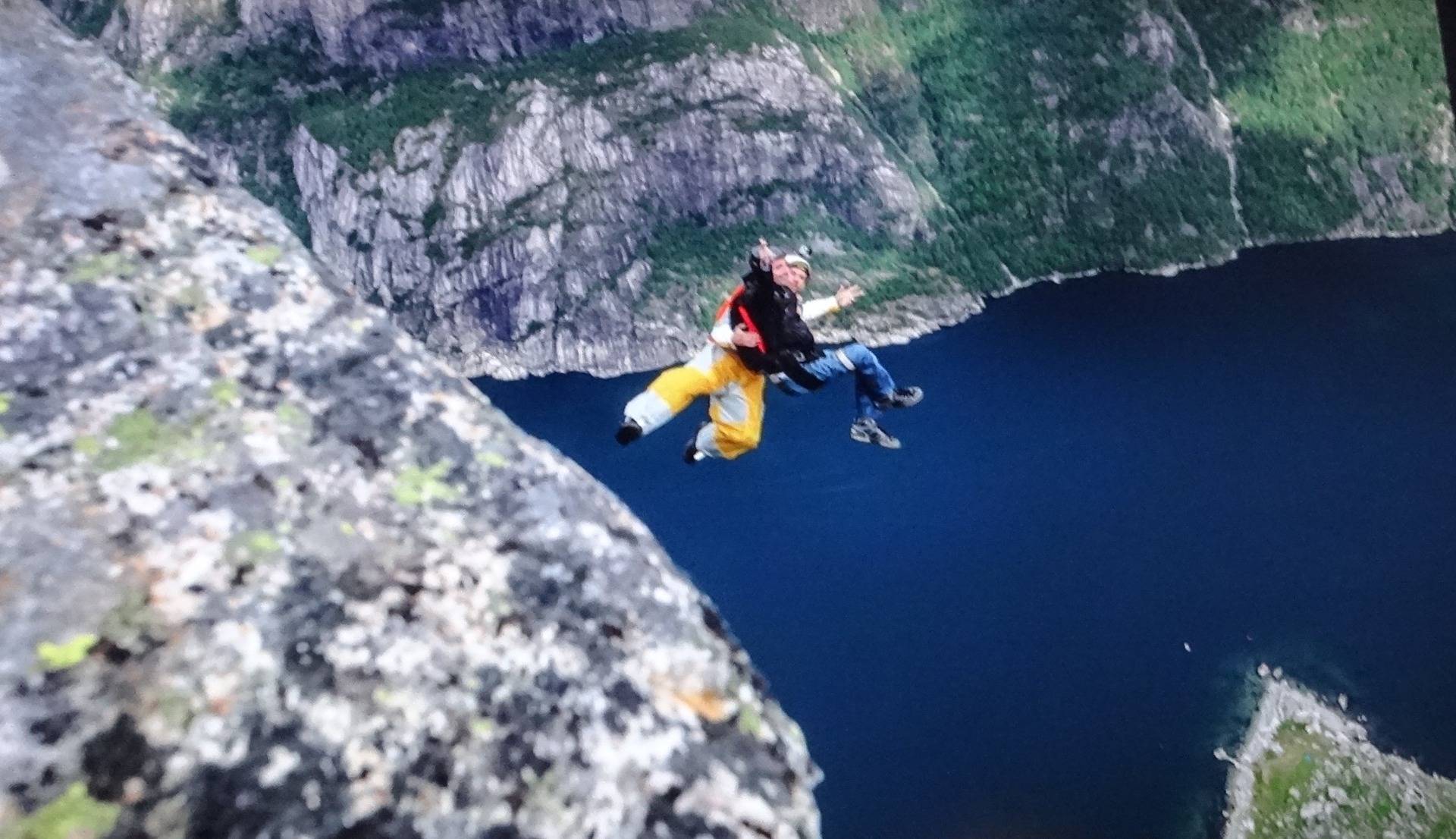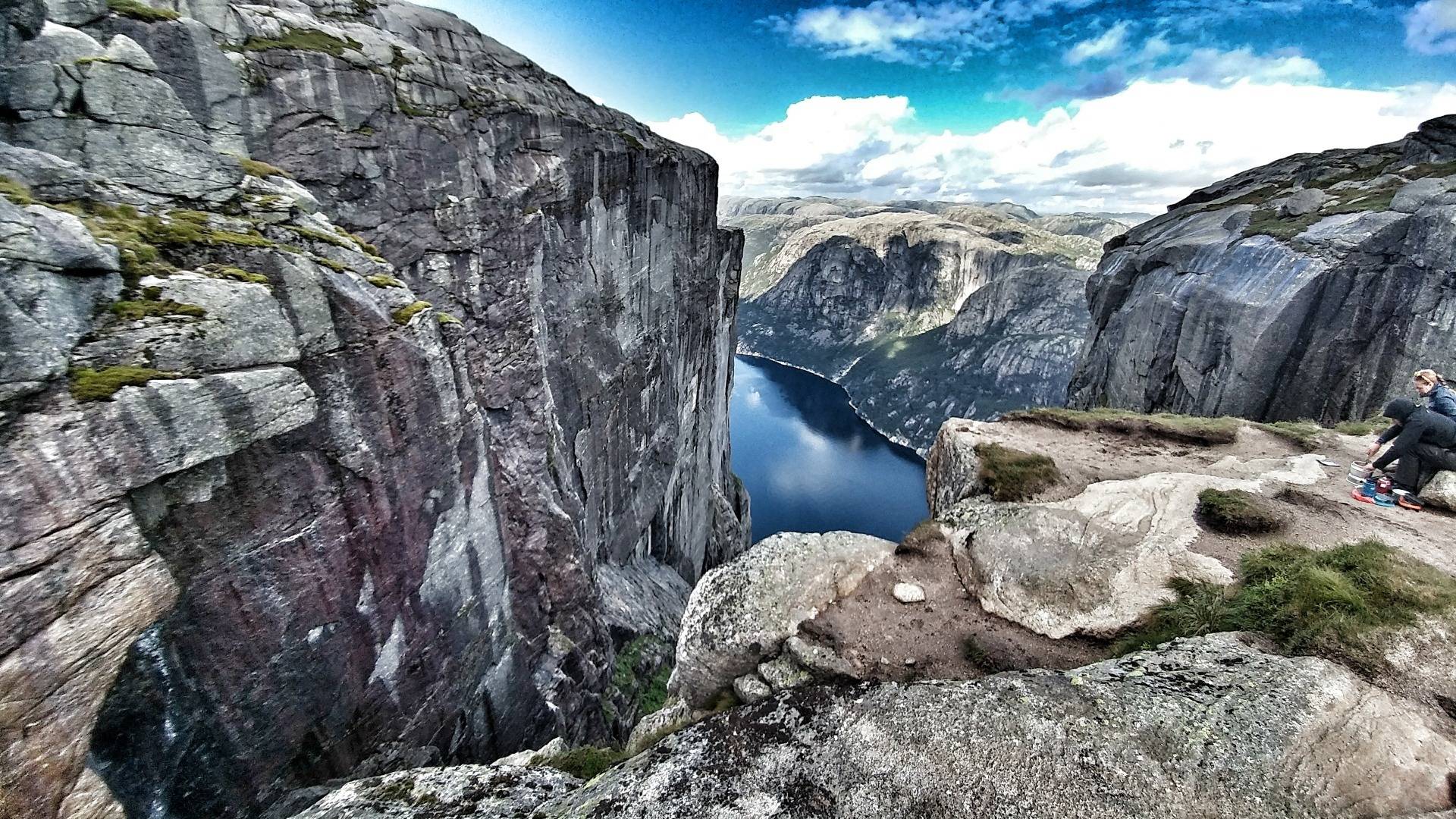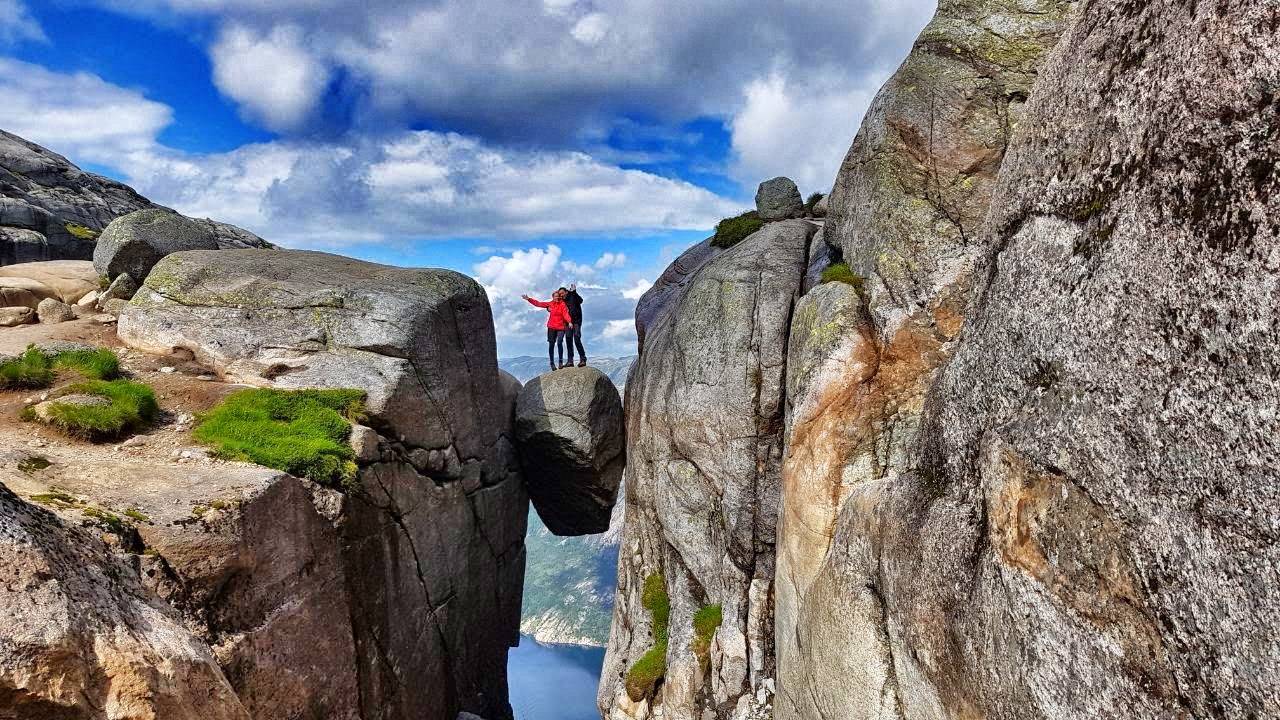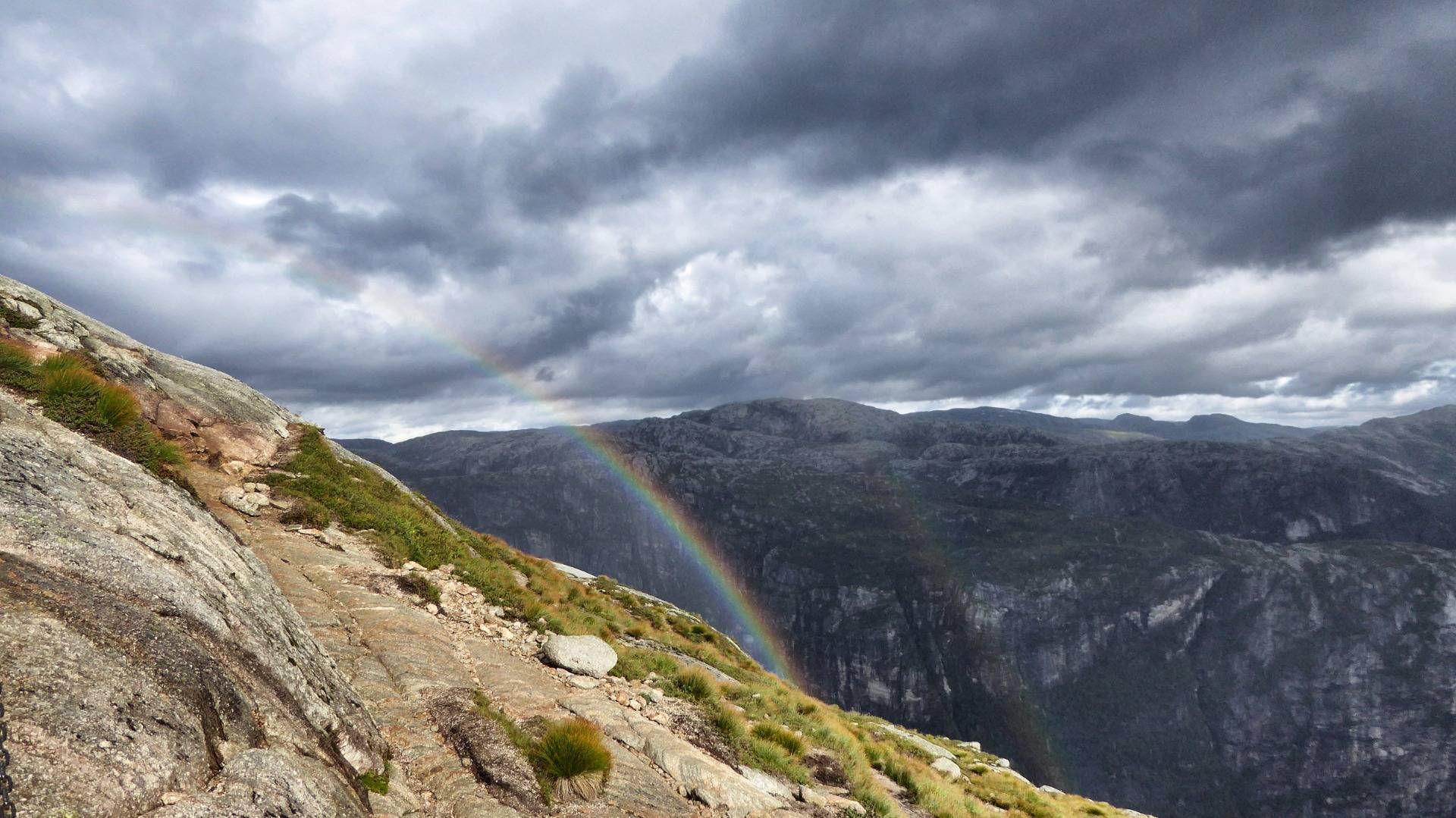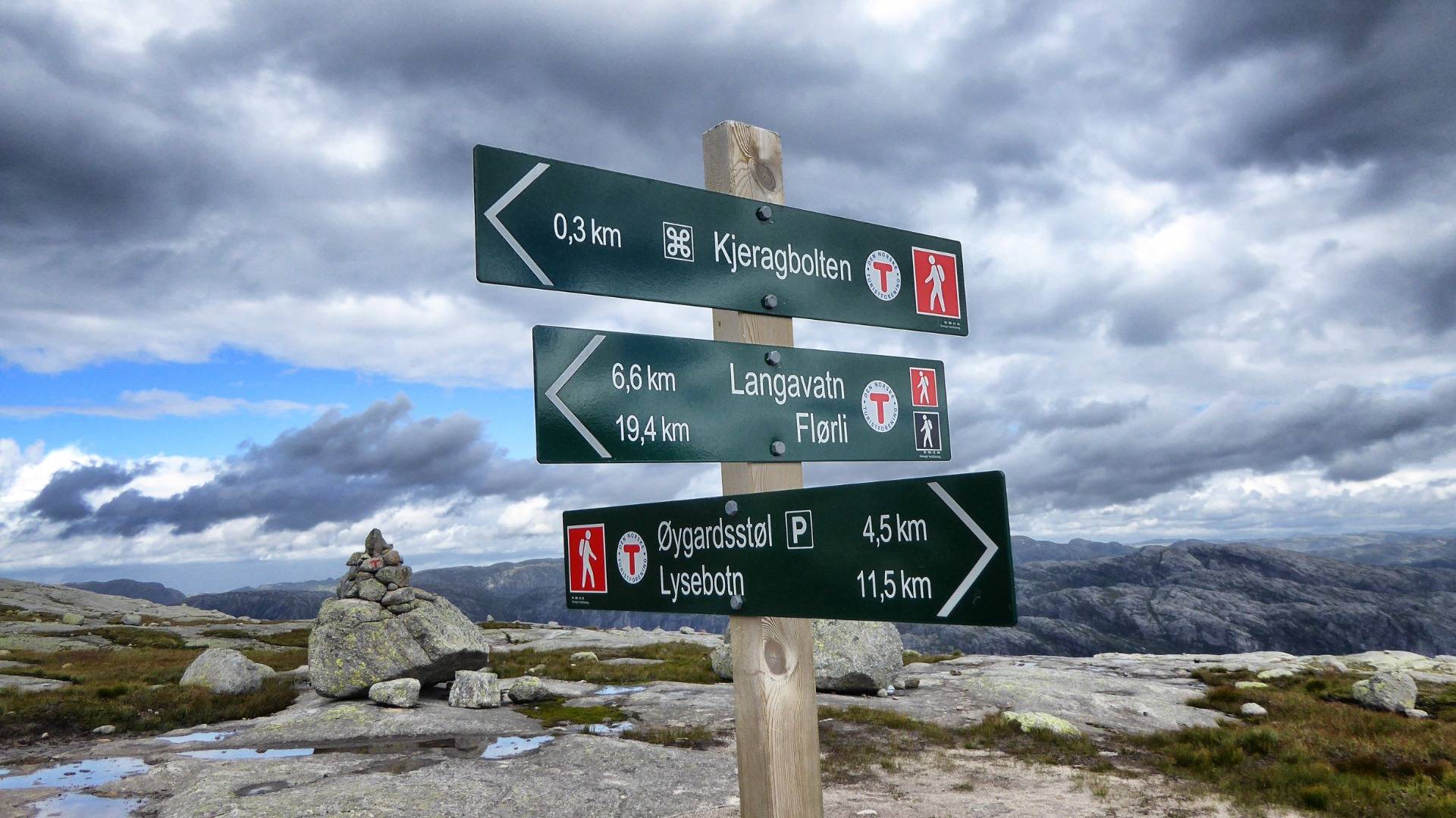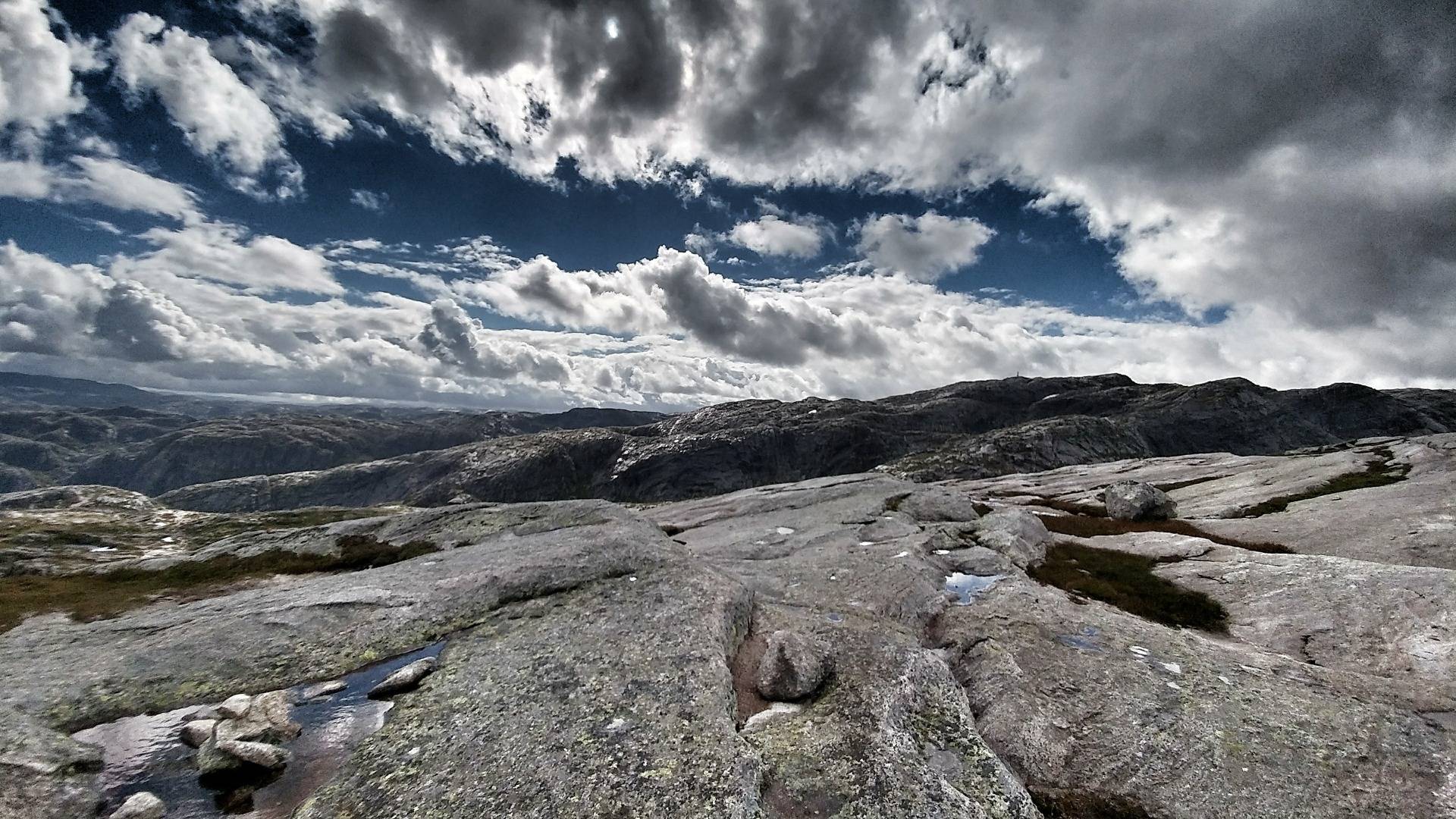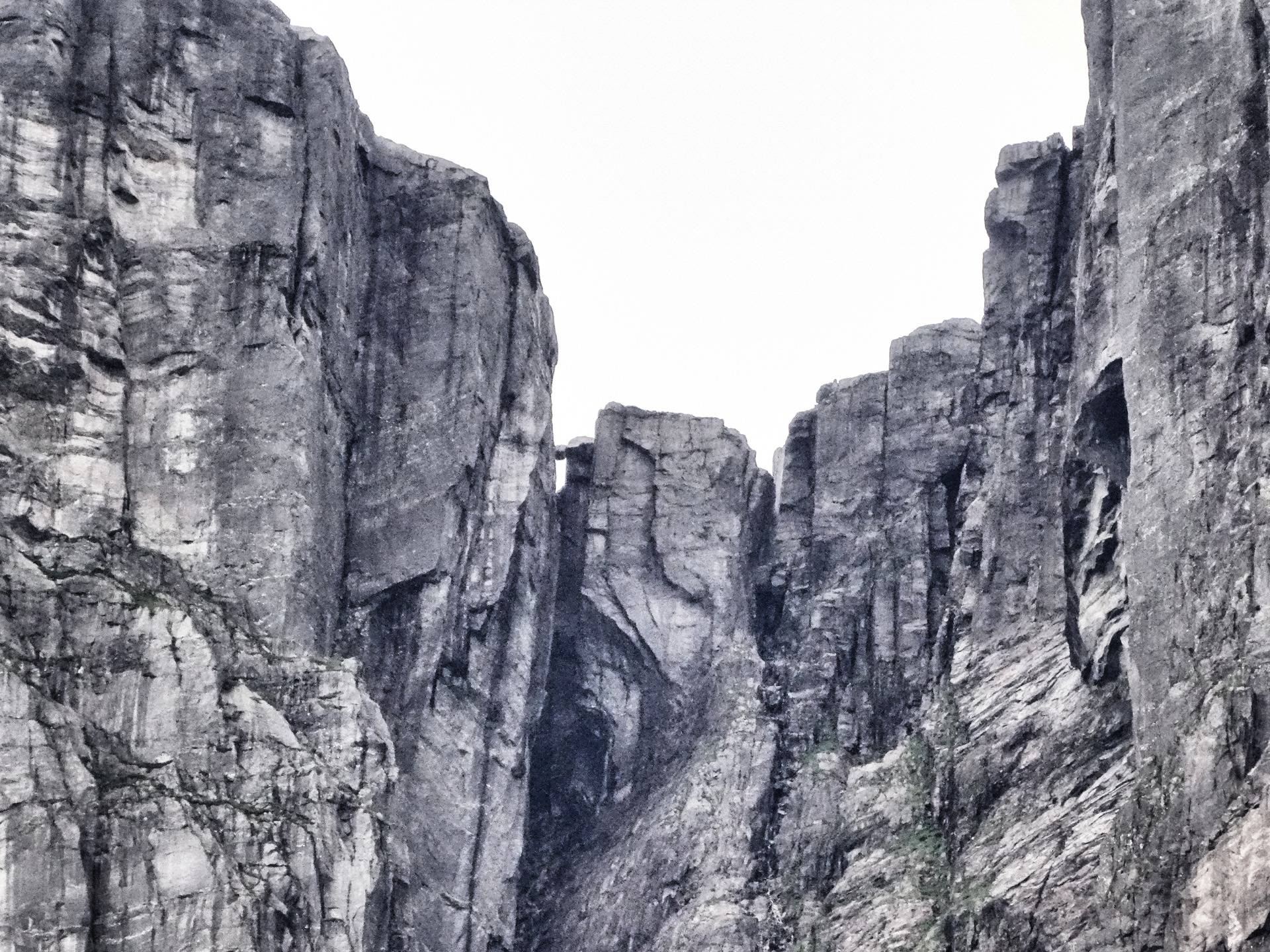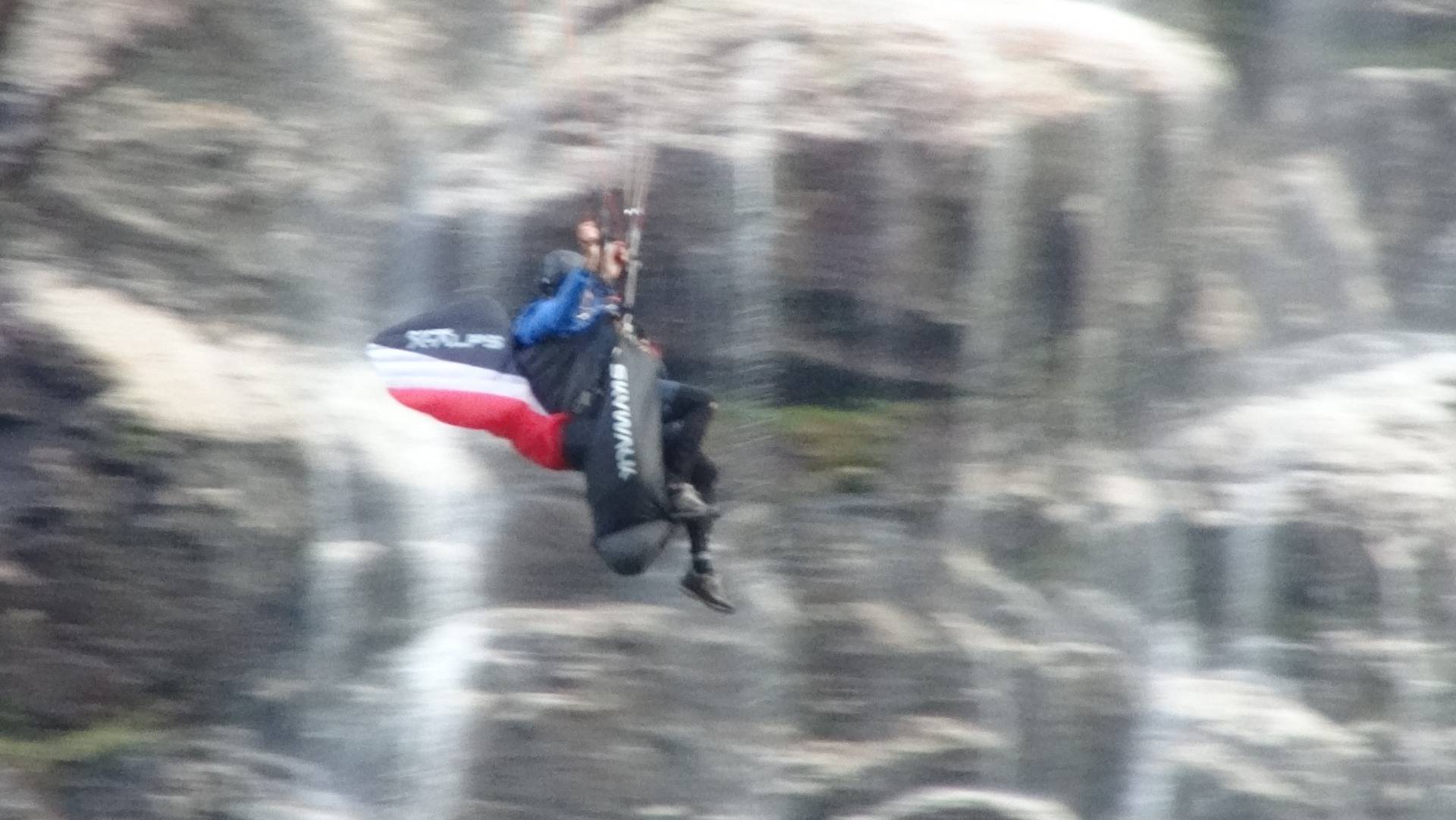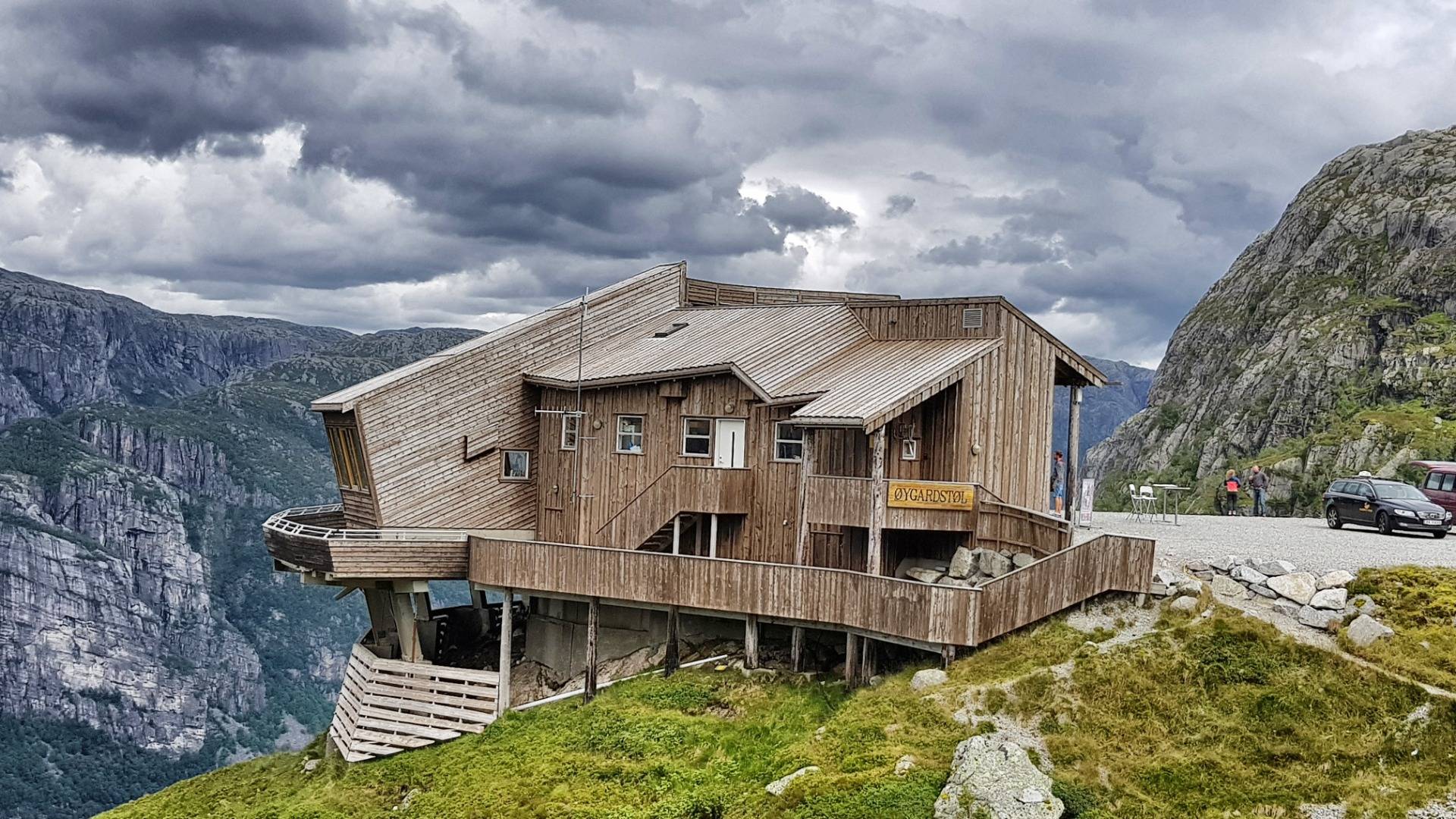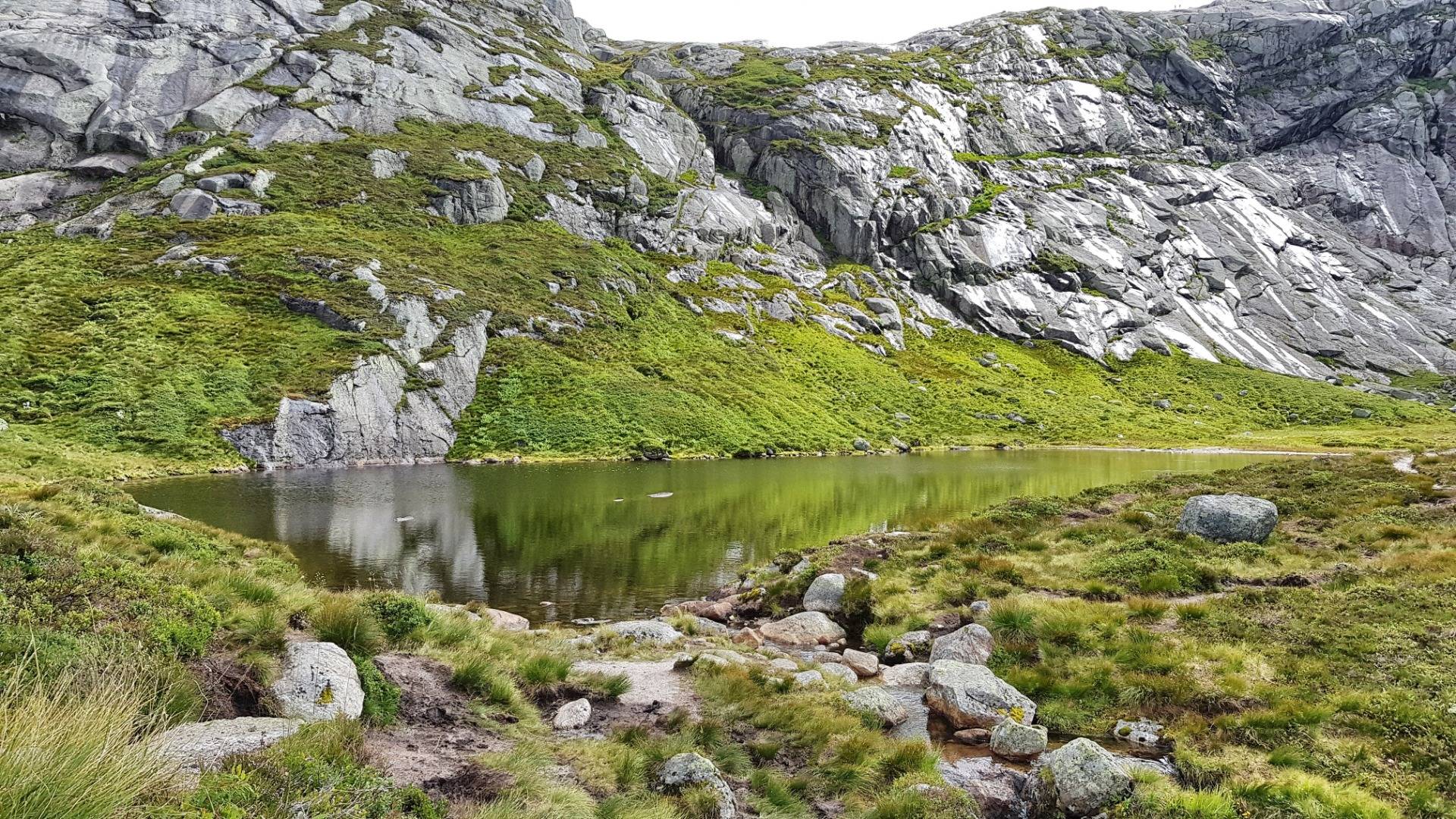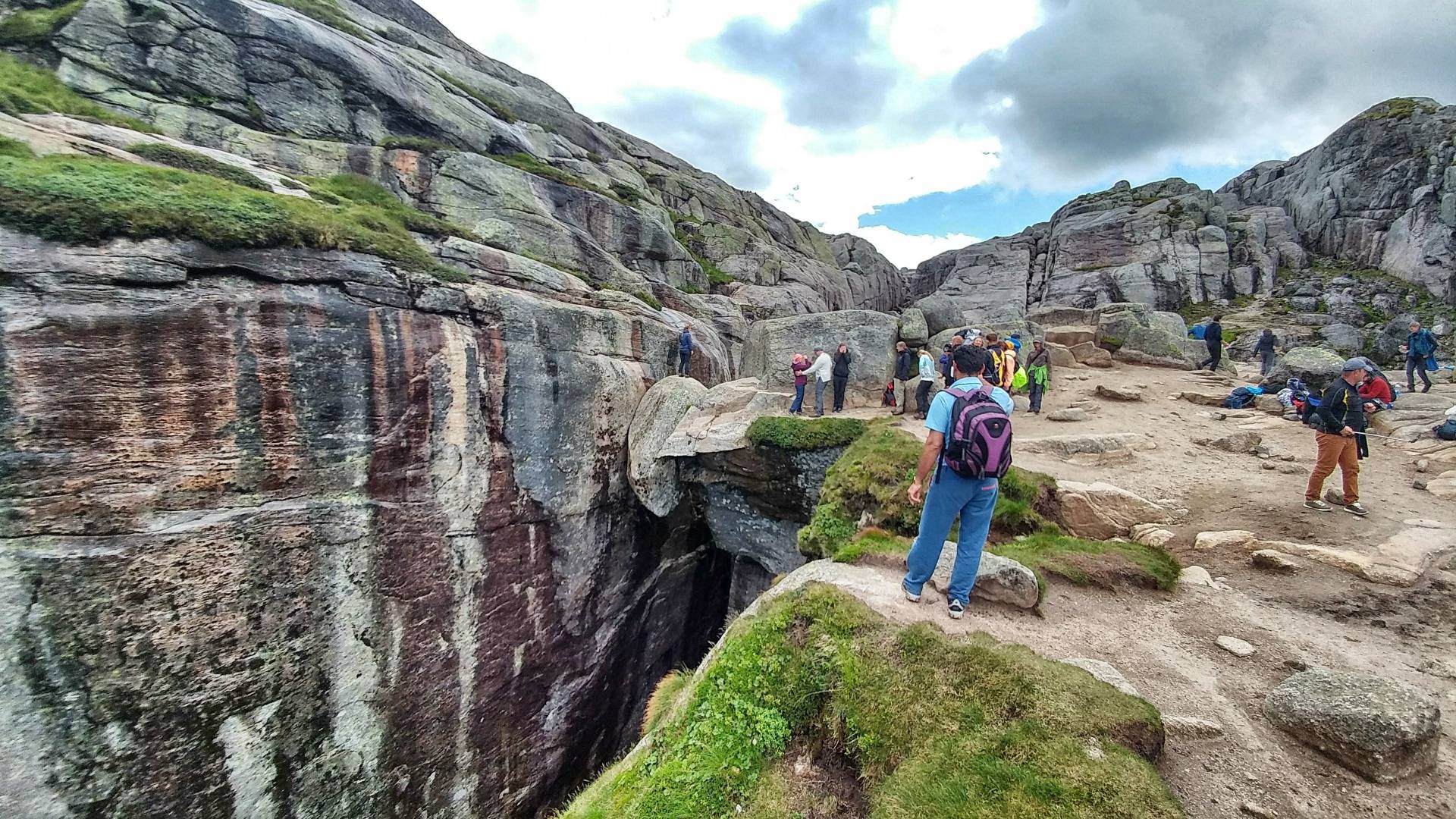In search of memories, tourists easily go astray. Then the hiker suddenly finds himself standing in front of a flat, steep rock, soaking wet from rain and it only to be climbed when you pull yourself up with both hands on a heavy iron chain. This is what daring hikers can experience in southern Norway: If you have the time and patience to complete a long hike that leads over bare rocks and bare plateaus, through green valleys and over steep slopes, you might reach the legendary Kjeragbolten, an elliptical rock that a crazy nature has wedged right between two vertical rock faces.
Kjerag is a well-known rock plateau by the Lysefjord, which is only a few kilometres from Preikestolen (read my article), at least if you do not try to walk along the path by feet, because then it takes a week to get here to the Øygardstøl car park, where the ascent starts.
From Øygardstøl it goes up to 1084 metres above the Lysefjord, through rough terrain without trees or any other protection. The ascent requires courage and a head for heights, and in bad weather biting gusts of wind further aggravate the hiking conditions on the plateau. The hike takes five to six hours, as there is a difference in altitude of 800 metres to overcome. And, as I said, at some points along the eleven-kilometer route, hikers must pull themselves up or slide down using steel cables. Along the way, in addition to the actual ascent, two mountains and two valleys have to be overcome. The valleys are characterised by marshy terrain or lakes. The peaks are windy and views are incredible.
It is important to check the weather forecast before the start, because here the weather changes at lightning speed and when it rains it gets so slippery on the plateau that you can get scared. This is why the hike is only recommended in the summer between June and September, when it is reasonably generally acceptable. In winter, only hikers with special equipment and mountain guides can go up.
The Kjerag rock plateau is a popular attraction for base-jumpers too, who mostly climb up from the campsite down by the fjord and land there again. A spectacle that looks very easy from below, but seems suicidal from above. SBK Base, a provider at Lysebottn, warns on its homepage: "Base jumping is a high-risk activity that can result in serious injury or death." SBK Base has accompanied more than 53,000 jumps from the Kjerag rock plateau since 1994, according to its own information. Twelve of them ended fatally, according to the provider. Altogether there had been 136 accidents.
But there is also enough thrill during normal mountain hikes, because after all the Kjeragbolden is waiting at the finish, a rock from the iron time with the size of a car. Those who are lucky and have also survived the stream that flows towards the rock face do not have to queue too long to jump over to the stone, which does not have much more room than a person needs to stand. Behind it it goes down 1000 meters into the depth.
From the most popular photo position, standing on the stone looks very easy. But not everyone dares to take the deadly step over: Again and again people try to do so, only to shy away at the last moment.
Those who dare will not forget the moment. One stands spectacularly free in the wind above the glittering fjord. But now, no wrong step, as the standing area is only one square metre wide and on one hand, there is the queasy feeling that the chunk could loosen and one could fall with it into the depth. On the other hand the fear that a sudden gust could blow you into the abyss.
Most people dare to do it anyway, because they don't want to miss the particularly spectacular souvenir photo. Very brave people then do some artistry there, some cool poses and crazy tricks. But also on the wide plateau next door there is a spectacular view from the plateau to the Lysefjord, not quite so exposed, not quite so shaky. But already now you have to save your strength, because the way back is not less demanding than the ascent.
Please follow me on Travelfeed
